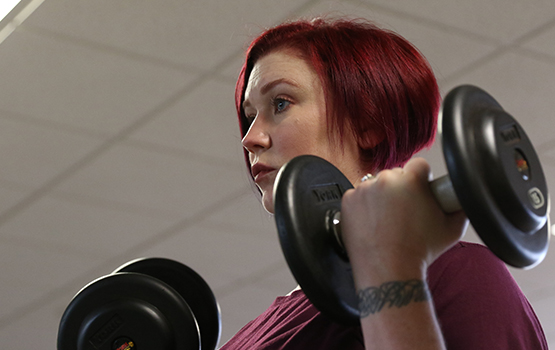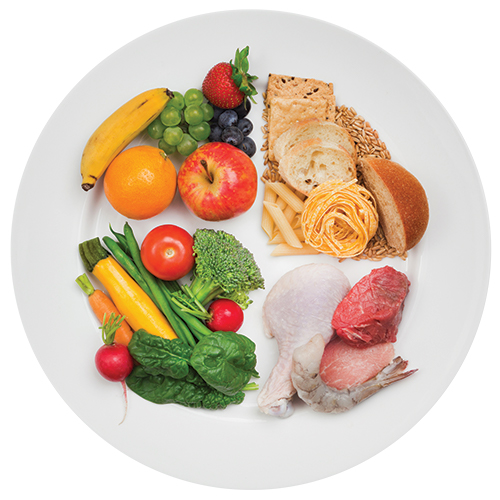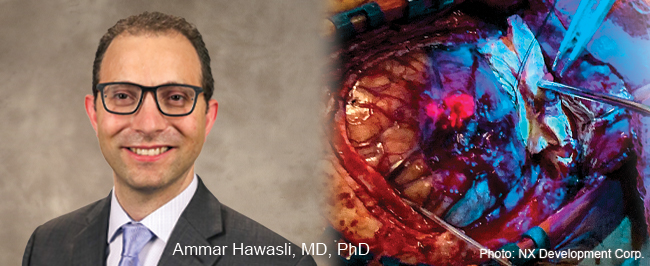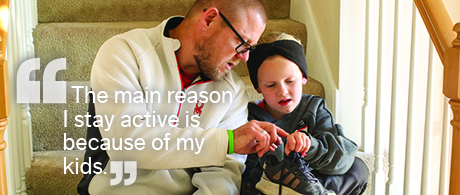In Virginia's Own Words
"For me, it's not so much about dropping weight as it is about building muscle, getting in shape and feeling good."
Watch Virginia talk about how she moves past weight loss plateaus.
Educating local community groups about why eating healthy is important is Virginia Vanderford’s passion. As a nutrition educator for the University of Missouri Extension, she’s worked with 4-H clubs, drug rehabilitation programs, alternative high schools, transitional housing programs and domestic violence shelters.
Although Virginia practices what she teaches, she is very familiar with a common weight loss challenge — what to do when the scale doesn’t budge or heads in the wrong direction.
“When I’ve been working out six days a week and eating a perfect diet but step on the scale and the number doesn’t move, it’s defeating” Virginia shared. “We’re not conditioned to understand that the number on the scale doesn’t necessarily mean we’re unhealthy. It can play tricks on your mind.”
Virginia’s experience is typical for almost anyone who is actively trying to lose weight. “If your weight loss is very fast in the beginning, you’re likely to hit a plateau,” explained Dayane Parker, RD. “You’re excited you’re losing weight, and then the scale stays the same or moves up. It’s frustrating, but it’s normal. With the right tools, you can move past it pretty quickly.”
Added Challenges
Virginia’s weight loss efforts are made more challenging because of Hashimoto’s disease, an autoimmune disorder that causes hypothyroidism, or underactive thyroid. A side effect of Hashimoto’s is a slow metabolism. “It’s really easy for me to gain weight and really hard for me to lose weight,” Virginia said. “Plus, I tend to gain weight around the middle, which, for women, is really hard to lose.”
Food Swaps
Diet tweaks are one way to push past a weight loss plateau. “Some people stick with the same meals because they know how many calories they are eating,” Dayane said. “But, if you eat broccoli, brown rice and chicken for lunch four days a week, your body is getting the same nutrients over and over. It needs something different. Find some new recipes and try something new.”

Virginia changes what she eats and when often. “I have some limitations in my diet because of Hashimoto’s, so I try to move things around. I’m consistent with what I eat for breakfast, but recently I realized I needed to switch up when I ate my biggest meal of the day.”
Right now, Virginia works from home, which makes all-day grazing easier and often leads to eating a big dinner. “I have to catch myself,” she said. “I try to eat a good lunch and a smaller dinner. When I do that, I notice I have more energy.”
She’s also taken a hard look at her family’s overall eating habits. “I love food, especially pizza, and I don’t ever deprive myself, but I’ve had to become more mindful of what we eat,” she said. “We plan meals and keep healthy food in the house. We prepare food ahead of time so we’re not making dinner every night. It helps us resist the urge to call for takeout.”
Expert Advice
Break a Sweat
Adjust your exercise routine to tip the scale in the right direction.
Change up your routine. If cardio is your go-to exercise, try strength training a couple of days each week.
Step it up. If you walk for exercise, increase the intensity; if you lift weights, try using a heavier weight.
Add a day to your workout. If you work out three days a week, go for four.
Team up with a personal trainer. A trainer can give you an extra push.
Dayane works with other NKCH registered dietitians to offer nutrition counseling services that include one-on-one sessions that provide insight and advice to get the scale moving again.
“We analyze your diet to figure out what’s going on,” Dayane said. “We look at your carb and protein intake to see if switching one for the other may help. We may also look at your restaurant choices and portion sizes to see if there’s something you can change. We bring new ideas to the table and provide tons of resources.”
Dayane’s top tips for conquering a weight loss plateau include eating more protein and fiber, and drinking more water.
“Many people confuse hunger with thirst,” Dayane explained. “If you think you’re hungry, drink some water first. It’s possible you’re dehydrated.”
She also emphasized the benefit of eating actual food. “Eating a 120-calorie slice of cake isn’t the same as eating a 120-calorie apple,” Dayane said. “The apple is going to give your body needed fiber, water and nutrients. Go for chicken, fruits and vegetables instead of packaged foods.”
The Whole Picture
Dayane also encourages people to look beyond the number on the scale. “Many people just focus on the scale,” she said. “But that’s just a number. You have to look at your health overall. Are your cholesterol and blood pressure numbers good? Is your diabetes under control? Do you like how your clothes fit? You have to look at the whole picture.”
It’s advice Virginia takes to heart. “I’ve realized that I can’t focus so much on the number on the scale,” she said. “Instead, I focus on being physically active and noticing the small changes in my body. For me, it’s not so much about dropping weight as it is about building muscle, getting in shape and feeling good.”
It's not easy to lose weight and live a healthier lifestyle. Sometimes, you need help. Explore our outpatient nutrition counseling services.
Related Articles

March 9, 2020
3 Sneaky IBS Triggers
For people with irritable bowel syndrome, spring may spark a flare-up in symptoms

May 31, 2024
5 Nutrition Tips for a Healthier Lifestyle
Healthy eating and proper nutrition play a big part in maintaining good health. Here's how to improve your nutrition habits.

July 8, 2021
5-ALA Fluorescence Guides Neurosurgeons for More Complete Resections
Neurosurgeons Ammar Hawasli, MD, PhD, and Stephen Reintjes Jr., MD, with Meritas Health Neurosurgery, are now using a progressive treatment that allows for the more precise removal of malignant gliomas and glioblastomas.


